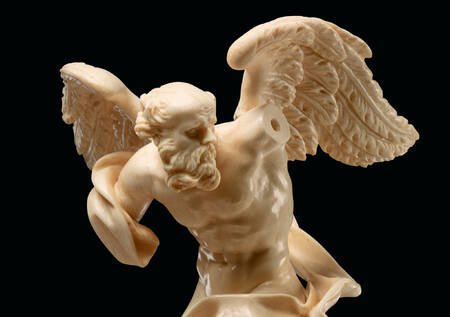
Schaumainkai 71
60596 Frankfurt am Main
Germany
Liebieghaus Skulpturensammlung
A MUSEUM WITH A UNIQUE ATMOSPHERE –
A WORLD-CLASS COLLECTION
Surrounded by one of Frankfurt’s most beautiful gardens, the Liebieghaus is home to a superb collection of some 3,000 sculptures dating from ancient Egypt to Neoclassicism. It is one of the world’s most prominent museums specializing in sculpture.
THE BUILDING
The Gründerzeit villa once belonging to Baron von Liebieg forms a unique setting for the presentation of sculpture’s five-thousand-year history. Not only the collection, but also the building itself invites exploration. Visitors can embark on a tour of discovery all the way up to the tiniest nooks and crannies beneath the tower roof, for instance to the Studioli in the attic. These small atmospheric studies (Italian: studioli) present a broad spectrum of sculptural treasures large and small.
With the expanded gallery wing featuring the antiquities collection and the Open Depot set up in conjunction with the comprehensive new presentation of the holdings, the Liebieghaus offers a well-founded survey of masterworks of Egyptian, Greek and Roman antiquity, the Middle Ages, the Renaissance, Mannerism, the Baroque, the Rococo, Neoclassicism and Eastern Asia on 1,600 square metres of exhibition space.
FROM TOWN VILLA TO SCULPTURE MUSEUM
VILLA LIEBIEG
The Bohemian textile manufacturer Heinrich Baron von Liebieg (1839–1904) had had his villa at Schaumainkai 71 built in the 1890s. In his will, he granted the city of Frankfurt the option of purchasing it at a preferential price on the condition that it would “maintain a public art museum in the building for all time”. In 1909, just two years after the founding of the municipal sculpture museum, it was opened in the villa, to which a gallery wing had meanwhile been added. At the time, the Liebieghaus holdings encompassed some 350 works – a worthy complement to the already existing painting collection of the Städel Museum.
In the establishment of a collection devoted exclusively to sculpture, the founding director Georg Swarzenski aspired towards the aim “of illustrating the development of sculpture through the historical ages by collecting outstanding or characteristic works”. As far back as the early twentieth century, the museum succeeded in acquiring a large number of outstanding works within just a few years.